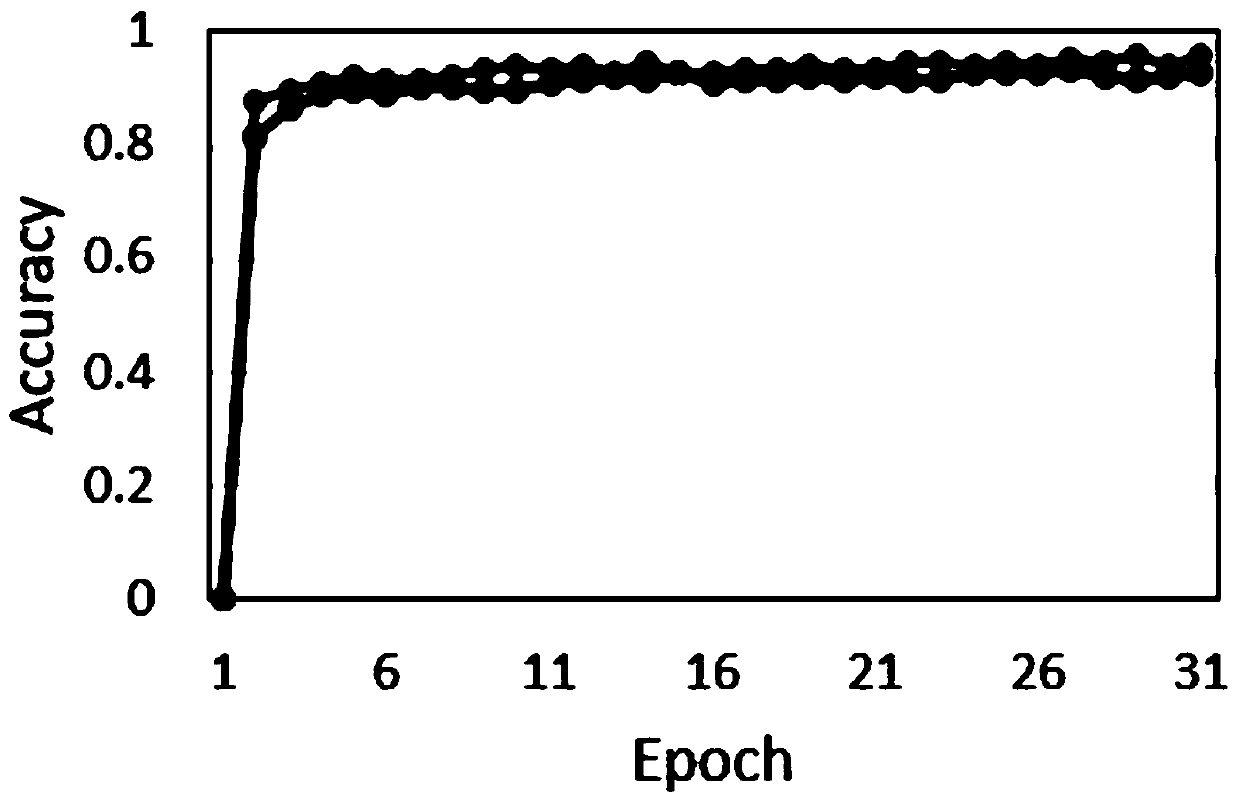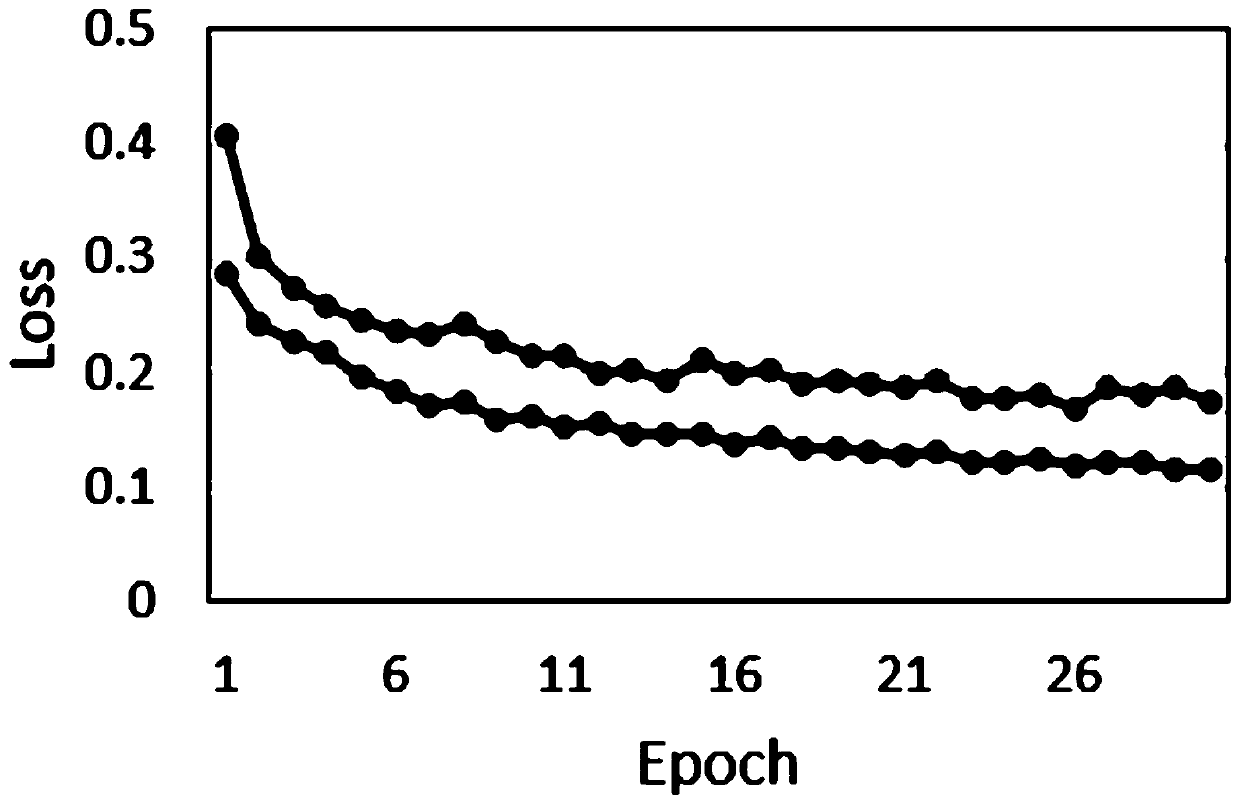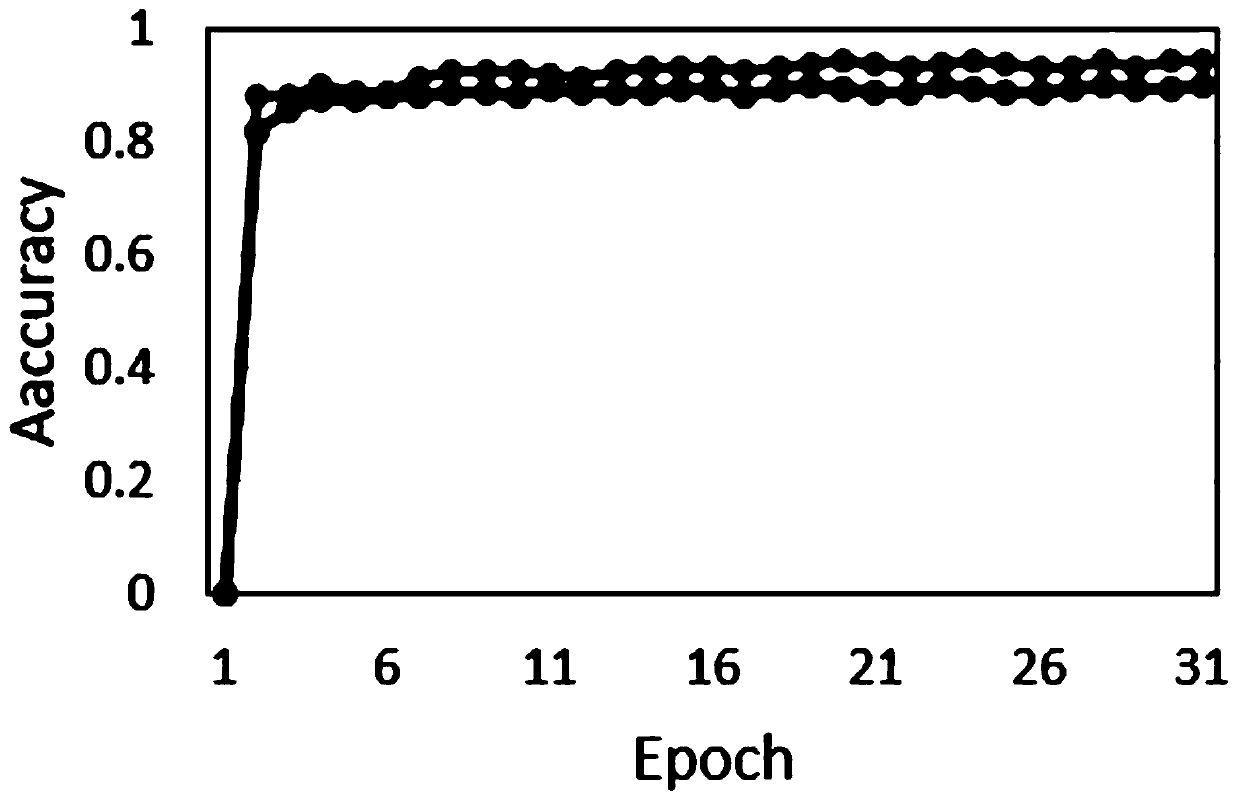Ceiling earthquake damage identification method based on convolutional neural network
A technology of convolutional neural network and identification method, which is applied in the field of ceiling earthquake damage identification based on convolutional neural network, can solve problems such as low efficiency, and achieve the effects of improving training speed, saving manpower and material resources, and saving training time
- Summary
- Abstract
- Description
- Claims
- Application Information
AI Technical Summary
Problems solved by technology
Method used
Image
Examples
specific Embodiment approach 1
[0030] Specific Embodiment 1: In this embodiment, the recognition method of the ceiling earthquake damage based on the convolutional neural network is implemented in the following steps:
[0031] Step 1: Select the target sample from the ceiling earthquake damage picture, adjust the target area of the picture to be in the center, and while maintaining the aspect ratio, randomly scale the size of the target sample to 224×224, perform normalization processing, and obtain preprocessing target sample;
[0032] Step 2: Rotate and mirror the preprocessed target sample to obtain the expanded ceiling earthquake damage dataset image;
[0033] Step 3: Load the pre-trained AlexNet model as a feature extractor, extract the depth feature vector of the image of the expanded ceiling earthquake damage dataset, modify the last fully connected layer of the AlexNet model, and use the cross-entropy loss function and Adam adaptive optimization function Perform backpropagation, iteratively train...
specific Embodiment approach 2
[0038] Embodiment 2: This embodiment differs from Embodiment 1 in that in step 2, the target image is rotated by 90°, 180° and 270°.
specific Embodiment approach 3
[0039] Embodiment 3: This embodiment differs from Embodiment 1 or Embodiment 2 in that in step 2, the target image is mirrored horizontally and vertically.
PUM
 Login to View More
Login to View More Abstract
Description
Claims
Application Information
 Login to View More
Login to View More - R&D
- Intellectual Property
- Life Sciences
- Materials
- Tech Scout
- Unparalleled Data Quality
- Higher Quality Content
- 60% Fewer Hallucinations
Browse by: Latest US Patents, China's latest patents, Technical Efficacy Thesaurus, Application Domain, Technology Topic, Popular Technical Reports.
© 2025 PatSnap. All rights reserved.Legal|Privacy policy|Modern Slavery Act Transparency Statement|Sitemap|About US| Contact US: help@patsnap.com



